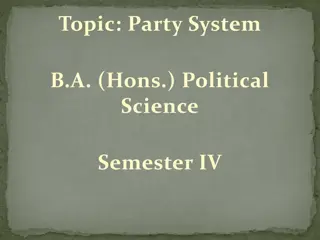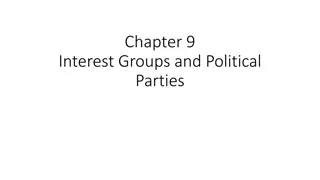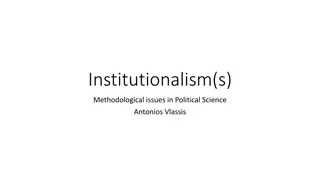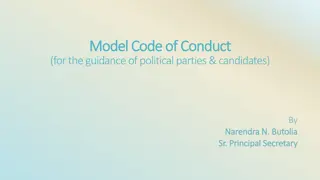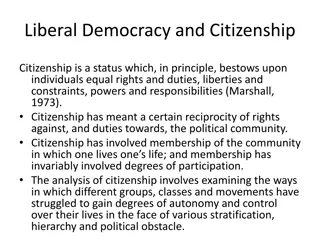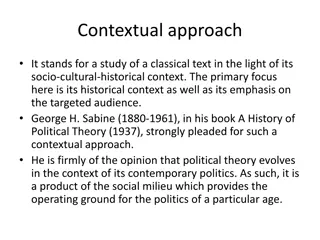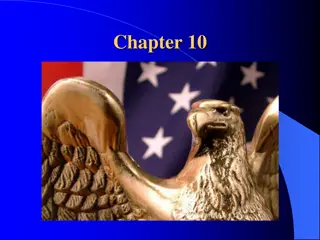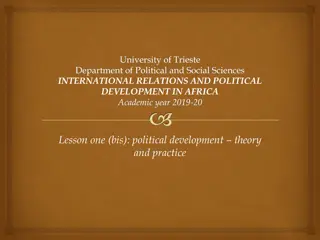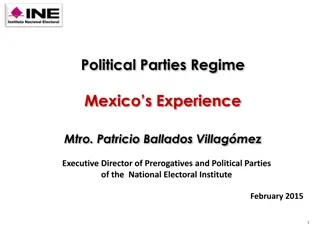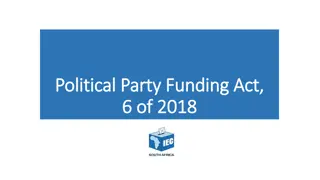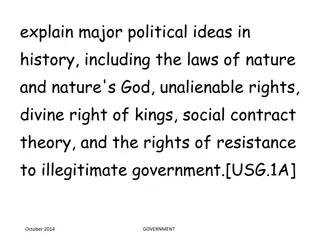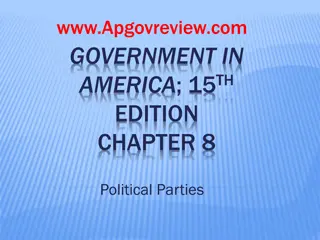Overview of Major Political Parties in India
Explore the characteristics and recognition criteria of political parties in India, including national parties like BSP, BJP, CPI, CPIM, INC, and NCP. Learn about their symbols, ideologies, and significance in the political landscape of India.
Download Presentation

Please find below an Image/Link to download the presentation.
The content on the website is provided AS IS for your information and personal use only. It may not be sold, licensed, or shared on other websites without obtaining consent from the author.If you encounter any issues during the download, it is possible that the publisher has removed the file from their server.
You are allowed to download the files provided on this website for personal or commercial use, subject to the condition that they are used lawfully. All files are the property of their respective owners.
The content on the website is provided AS IS for your information and personal use only. It may not be sold, licensed, or shared on other websites without obtaining consent from the author.
E N D
Presentation Transcript
Dr. Pranami Laskar Department of Political Science Dr. BKB College, Puranigudam
Characteristics of Political Parties in India: Multi-party system classified as national, state or regional level Status of party is accorded by the Election Commission of India All parties are registered with Election Commission
National Political Parties Political parties which participate in different elections all over India Criteria for Recognition: A party by must live up to at least one of the following qualifications to be recognized Win a minimum of 2% of the seats in the Lok Sabha from at least 3 different states In General Elections, party must manage to win 6% of votes and win at least 4 Lok Sabha seats The party is recognized as a state level party in four or more states Very few political parties are able to make presence as a national party These parties have a big presence in India: Bahujan Samaj Party (BSP), Bharatiya Janata Party (BJP), Communist Party of India (CPI), Communist Party of India (Marxist) (CPIM), India National Congress (INC), National Congress Party (NCP)
Bahujan Samaj Party (BSP) The word bahujan means the majority of the people and Samaj means society BSP represents the majority of the people and represents mainly the oppressed sections of society The elephant on the symbol represents physical strength and will-power
Bharatiya Janata Party (BJP) Translates to Indian People s Party Right-wing political position Strongly adheres to cultural nationalism through social conservatism and integral humanism The symbol contains a lotus, which is India s flower and is used to indicate national identity
Communist Party of India (CPI) Oldest party to have begun the communist movement in India Symbol is ears of corn and a sickle with a red background Red is the color of struggle symbolizing a communist party The ears of corn and a sickle depicts that CPI contains peasants, farmers and laborers who work the fields for a living
Communist Party of India (Marxist) Left-wing political party with communist political ideology The symbol is red which represents communism The intersecting hammer and sickle depicts that the party is a party of working class ( peasants, farmers and laborers) The sickle and hammer are used to cut corn and all other crops in the field similar from the CPI because their ideologies are not much different Symbol is very
India National Congress (INC) Country s oldest political party One of the two major national political parties Operates on the ideology of Gandhian Socialism and Social Democracy Center- left political position Symbol is the right hand with its palm- side facing front, usually seen in the center of the Indian flag which is the background
Nationalist Congress Party (NCP) Born out of the Indian National Congress when 3 members were expelled Stands for upholding democratic secular society along with equality, social justice and unity in the nation Believe integrity of India can be achieve by strengthening federalism and decentralizing power Symbol is a clock that reads 10:10, drawn in blue and has 2 legs and an alarm button- denotes that NCP will keep fighting for its principle no matter how difficult the situation
State Parties Political parties that participate in different elections but only within one state Some states have more than one state party State Party A party must live up to at least one of the following qualifications to be acknowledged as a state party Win at least 3 seats or 3% of the seats in the state legislative assembly Win minimum one seat in the Lok Sabha for every 25 seats or any fraction allotted to the state Status of a state party can still be bestowed upon an entity even if it fails to win any seats in the Lok Sabha or the assembly if it wins 8% of the total votes cast in the entire state Critical to make or break alliances in the Lok Sabha election Criteria of a
Regional Parties Smaller parties that hold considerable clout in individual states leading to high fragmentation of vote distribution Trump card of India s political system
Political Parties Political parties in which one person pulls all the strings Shiv Sena have their stronghold in the public not because of leaders but because of party ideology Other parties are completely dependent on respect the leader has in public Also independent candidates High number of film actors join Indian politics Many state parties attract local film industry actors in their party

 undefined
undefined



